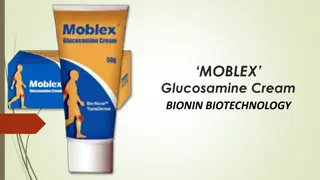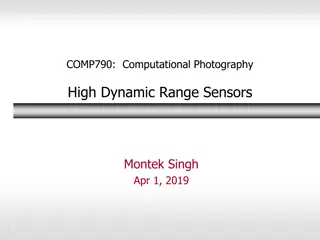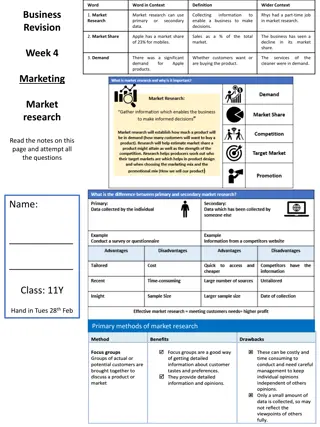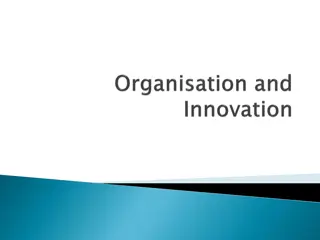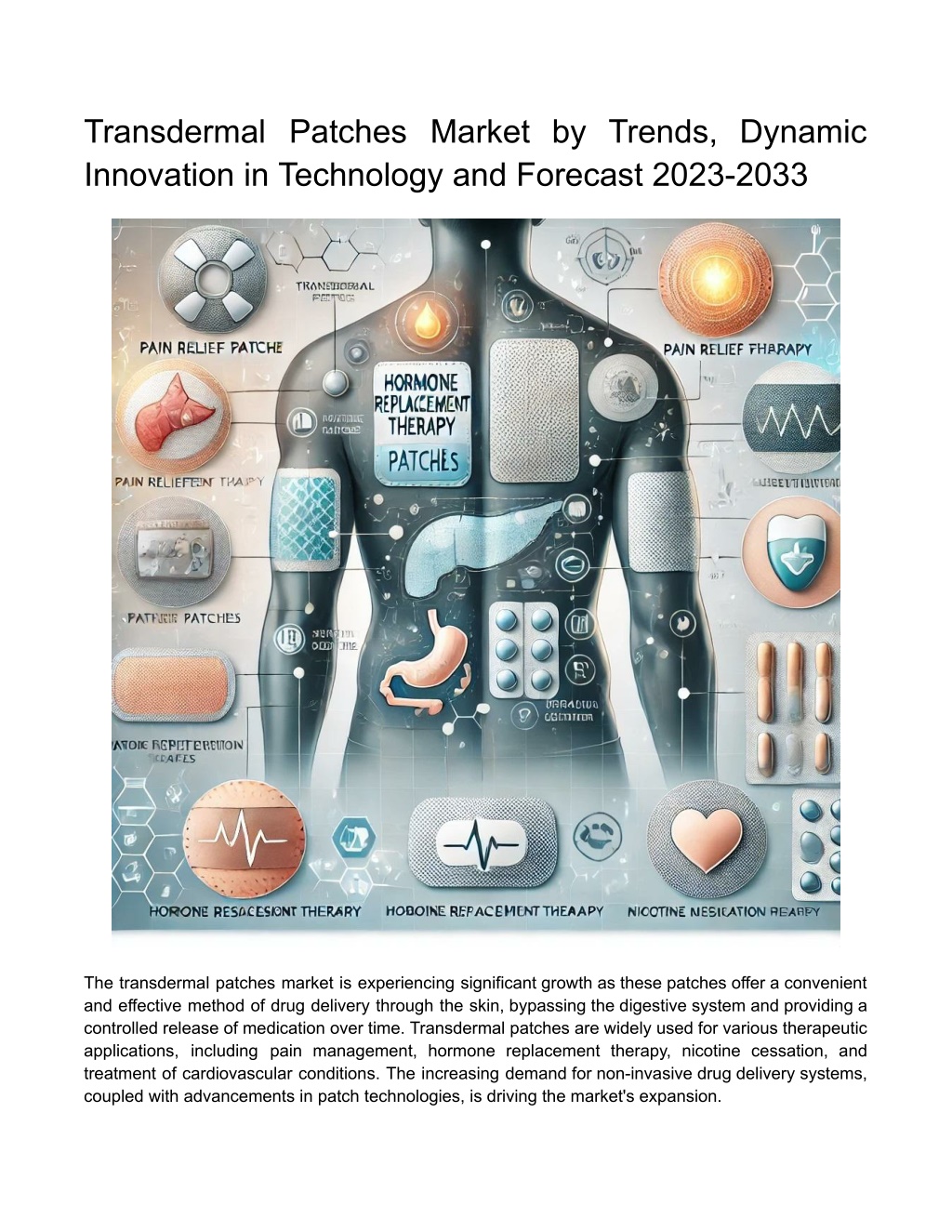
Transdermal Patches Market Dynamic Innovation in Technology and Forecast
The Transdermal Patches Market is witnessing substantial growth owing to the rising prevalence of chronic diseases like hypertension, diabetes, and pain-related conditions, along with an increasing elderly population globally.nnRead Report Overview
Download Presentation

Please find below an Image/Link to download the presentation.
The content on the website is provided AS IS for your information and personal use only. It may not be sold, licensed, or shared on other websites without obtaining consent from the author. Download presentation by click this link. If you encounter any issues during the download, it is possible that the publisher has removed the file from their server.
E N D
Presentation Transcript
Transdermal Patches Market by Trends, Dynamic Innovation in Technology and Forecast 2023-2033 The transdermal patches market is experiencing significant growth as these patches offer a convenient and effective method of drug delivery through the skin, bypassing the digestive system and providing a controlled release of medication over time. Transdermal patches are widely used for various therapeutic applications, including pain management, hormone replacement therapy, nicotine cessation, and treatment of cardiovascular conditions. The increasing demand for non-invasive drug delivery systems, coupled with advancements in patch technologies, is driving the market's expansion.
According to BIS Research, the Transdermal Patches Market is witnessing substantial growth owing to the rising prevalence of chronic diseases like hypertension, diabetes, and pain-related conditions, along with an increasing elderly population globally. Transdermal Patches Market Drivers 1. Rising Demand for Non-Invasive Drug Delivery Systems: One of the primary factors driving the growth of the transdermal patches market is the increasing preference for non-invasive drug delivery methods. Transdermal patches provide a pain-free alternative to injections and oral medications, which enhances patient compliance, especially among those who are averse to needles or have difficulty swallowing pills. 2. Advantages of Transdermal Patches: Transdermal patches offer several benefits, including steady drug release, improved bioavailability, and reduced side effects compared to oral or injectable forms. By delivering drugs directly into the bloodstream through the skin, these patches can maintain consistent therapeutic levels, minimizing fluctuations that often occur with other delivery methods. 3. Technological Advancements: Innovations formulations are contributing to the growth of the market. The development of patches with enhanced permeability, better skin adhesion, and the ability to deliver a broader range of drugs has expanded the potential applications of transdermal systems. Additionally, microneedle patches and iontophoresis-enhanced patches are emerging as advanced options that further improve drug delivery efficiency. 4. Growing Prevalence of Chronic Diseases: The rising incidence of chronic conditions such as diabetes, cardiovascular diseases, and pain-related disorders is driving the demand for transdermal patches. These conditions often require long-term medication, and transdermal patches offer a convenient and effective solution for sustained drug delivery, enhancing patient quality of life. 5. Increasing Adoption in Hormone Replacement Therapy (HRT) and Pain Management: Transdermal patches are widely used in hormone replacement therapy (HRT) for conditions such as menopause, as well as in pain management for patients with conditions like arthritis or cancer. The effectiveness and ease of use of these patches make them a preferred choice for both patients and healthcare providers. in patch materials, adhesives, and drug Request A Free Detailed Sample on Transdermal Patches Market! Challenges and Constraints 1. Skin Irritation and Allergic Reactions: One of the main challenges in the transdermal patches market is the potential for skin irritation and allergic reactions. Adhesives used in patches can sometimes cause redness, itching, or other dermatological issues, which can limit their use in some patients. 2. Limited Drug Permeability: Not all drugs are suitable for transdermal delivery due to their molecular size or properties that prevent adequate skin permeability. This limits the range of medications that can be delivered via transdermal patches and necessitates ongoing research to develop new formulations and technologies.
3. Regulatory Challenges: The regulatory landscape for transdermal patches is complex, with stringent requirements for demonstrating safety, efficacy, and quality. Meeting these regulatory standards can be time-consuming and costly, posing challenges for manufacturers, especially when introducing innovative patch technologies. Future Outlook The transdermal patches market is poised for continued growth, driven by ongoing innovations and the expanding applications of these systems in healthcare. Future advancements are likely to focus on enhancing the delivery of a wider range of drugs, including biologics and large molecules, through the skin. The development of smart patches equipped with sensors and drug delivery control systems is also expected to revolutionize the market, enabling real-time monitoring and personalized dosing. Additionally, the increasing focus on patient-centric healthcare and the growing demand for self-administration of medication will further boost the adoption of transdermal patches. As healthcare systems worldwide continue to emphasize non-invasive, convenient, and effective treatment options, the market for transdermal patches is expected to thrive. Some of the prominent names in this market are: Abbvie AdhexPharma Agile Therapeutics Booehringer Ingelheim International GmbH Corium, Inc. Endo Pharmaceuticals Inc. GSK Plc. Teva Pharmaceuticals Viatris Donwload Our ToC: Click Here! Conclusion The transdermal patches market is experiencing robust growth, driven by the advantages of non-invasive drug delivery, technological advancements, and the rising prevalence of chronic diseases. Despite challenges such as skin irritation and regulatory hurdles, the market outlook remains positive, with significant potential for innovation and expansion. As the industry continues to evolve, transdermal patches are set to play an increasingly important role in modern healthcare, offering patients a convenient and effective alternative to traditional drug delivery methods.



